
(Cancun, Mexico. The hairy legs belong to my wife)
Over the years we have been lead to believe that the sun is our enemy because the sun can cause skin cancer. And since the sun causes skin cancer, we should stay out of the sun, or wear sunscreen to block those harmful UV rays that cause skin cancer. But according to the latest research, the sun may not be the real problem.
Before I get to that, here are some fun facts about skin cancer you should know…
Skin cancer is on the rise
According to the National Cancer Institute, over the past 35 years the rate of new melanoma cases among American adults has tripled, from about 8 per 100k people in 1975 to about 24 per 100k in 2010.
Also alarming, the melanoma death rate for white American men, is up about 64% from 2.64 deaths per 100k in 1975 to 4.10 per 100k in 2010.
According to the CDC, since the year 2000, the rates of new melanoma cases among both men and women have been climbing by 1.9% per year. Even teenagers experienced a 2% per year increase between 1973 and 2009 (Wong 2013).
More than 2 million Americans develop skin cancer each year
Most cases involve one of two disfiguring, but rarely fatal, forms of skin cancer called basal and squamous cell carcinomas. 40-50% of Americans who live to age 65 will be diagnosed with one of these at least once during their life, according to the EPA. Studies suggest that basal and squamous cell cancers are strongly related to UV exposure over many years. But “strongly related” is not necessarily causative. We are all exposed to the sun and we all die eventually, so one could also make the case that sun exposure is strongly related to death. But of course it’s not.
Fair skinned people living close the equator have the highest skin cancer risk, which seems to explain why Australia has the highest skin cancer rates in the world.
This may surprise you, but the exact cause of melanoma is still not known.
Scientists have established some risk factors for melanoma: family history, indoor tanning, fair skin, freckles, the number of moles on a your skin, and exposure to ultraviolet radiation and severe sunburns (CDC 2013, NCI 2013).
They suggest you limit these risk factors by stopping indoor tanning, limiting exposure to UV radiation, and avoiding severe sunburns. I’m going to add one more suggestion. Eat lots of colorful fruits and vegetables with protective anti-oxidants and phytonutrients every day.
A 2019 study found that people whose diets included high levels of vitamin A from fruits and vegetables had a 17 percent reduction in risk for getting the second-most-common type of skin cancer (squamous cell carcinoma), as compared to those who ate modest amounts of foods and supplements rich in vitamin A.
Sweet potatoes, carrots, leafy greens, apricots and cantaloupe are all great sources of vitamin A.
People I know who’ve healed melanoma
Tanning beds cause cancer
In 2009 the World Health Organization classified tanning beds as carcinogenic and the International Agency for Research on Cancer calculates that if you start using tanning beds before age 30, your risk of developing melanoma jumps by 75 percent. On May 6, 2013 FDA commissioner Margaret A. Hamburg proposed banning tanning beds for anyone under 18 and requiring new warnings on tanning beds stating that they “can damage your skin and increase your risk of developing skin cancer.” A 2012 CDC report found that 1/3 of young white women ages 18-25 used a tanning bed an average of 20 times in the previous year.
In the last 35 years, tanning bed use has exploded and melanoma rates have tripled.
So let me just get bossy for one second: Stop using tanning beds!
Spray on tanning is bad too, don’t do that either.
Sunscreens alone do not reduce the rate of skin cancer
Every major public health authority – the FDA, National Cancer Institute, and the International Agency for Research on Cancer – has come to this same conclusion. (FDA 2011a, IARC 2001b, NCI 2011). One reason sunscreens cannot guarantee protection from skin cancer appears to be that sunscreen users differ in important ways from sun avoiders. Another reason is that U.S. sunscreens are not as protective as they should be.
Sunscreen may lower squamous cell carcinoma risk
Several researchers have found that regular sunscreen use lowers the risk of squamous cell carcinoma (Gordon 2009, van der Pols 2006) and diminishes the incidence of actinic keratosis – sun-induced skin changes that may advance to squamous cell carcinoma (Naylor 1995, Thompson 1993). But researchers have not found strong evidence that sunscreen use prevents basal cell carcinoma (Green 1999, Pandeya 2005, van der Pols 2006, Hunter 1990, Rosenstein 1999, Rubin 2005).
Whether sunscreen can help prevent melanoma is still unknown
Both UVA and UVB rays can cause melanoma and there is a strong correlation between melanoma risk and the number of sunburns someone has had, particularly in childhood (Dennis 2010). In 2009, the most recent year for available data, 61,646 people, including 35,436 men and 26,201 women, were diagnosed with melanoma, and 9,199 Americans died from it (CDC 2013). White Americans have much higher melanoma rates than people of other races and men have higher rates than women. Sun exposure appears to play a role in melanoma, but it’s complicated…
Here’s a puzzler: Melanomas usually appear on parts of the body that don’t get daily sun exposure. The most common site for men is the upper back. For women it’s the lower legs.
Studies are also confusing
Some studies suggest that sunscreens protect against melanoma like a 2011 study showing that sun-savvy Australians reduced their risk of melanoma with daily use of SPF 15 sunscreen, wearing hats, and avoiding the sun in other ways (Green 2011), but there’s no way to tell what helped the most… Maybe it was just the hats?
On the flip side, other studies suggest that sunscreen users have an increased risk of melanoma (Gorham 2007). A number of studies conducted in the 90’s reported higher incidence of melanoma among frequent sunscreen users (Autier 1998, Beitner 1990, Westerdahl 2000, Wolf 1998).
One factor could be the widespread use of retinyl palmitate in sunscreen. This form of vitamin A, has actually been linked to skin cancer in FDA-sponsored laboratory studies.
Perhaps baking chemical sunscreens into your skin isn’t such a good idea?
Of course the natural health community has been saying this for years. So yes, sunscreens may actually be contributing to (or causing) skin cancer more than the sun itself, especially the sunscreens that are loaded with toxic chemicals. This is why it’s important that you use clean, safe, non-toxic sunscreens.
The sun is the source of all life on earth. It’s not something to be afraid of.
There are several factors that suggest that regular sun exposure is not as harmful as intermittent high intensity sunlight (i.e. beach frying 1-2 times a year).
Outdoor workers report lower rates of melanoma than indoor workers (Radespiel-Troger 2009). Melanoma rates are higher among people who live in northern American cities with less year-round UV intensity than among residents of sunnier cities (Planta 2011).
Researchers think this might be because people with regular sun exposure have higher vitamin D levels which may in turn reduce melanoma risk (Godar 2011, Newton-Bishop 2011, Field 2011). The consensus among skin cancer researchers is that the most important step people can take to reduce their melanoma risk is to avoid sunburn, but not all sun exposure (Planta 2011). Regular sun exposure is good because it creates vitamin D in the body.
How Vitamin D happens
UV-B rays from the sun convert a form of cholesterol in your skin into a precursor for vitamin D. From there it is processed by your liver and kidneys into the vitamin D that your body can use.
Just 10 minutes of midday summer sun on a person wearing a tanktop and shorts can create as much as 10,000 IU of vitamin D in the body. Vitamin D is one of the most powerful, health-promoting, anti-cancer vitamins known. That’s why getting daily sunshine is so vital to health. When at the beach, I make it a point to get 10-20 minutes of sun before putting on sunscreen.
It is nearly impossible to get vitamin D from the sun during winter months, which may be one reason why so many people get sick in the winter. Even in the summer I don’t get as much sunshine as I’d like to. So my family supplements vitamin D3 year round.
Read my post on supplementing with vitamin D here
I have an olive complexion. My skin tans easily and hey, I like to be little tan. But unfortunately the downside of tanning is premature skin aging. I know several women (you do too) who were tan year-round in high school and college. They looked pretty good then, but once they hit their late twenties and early thirties they started looking pretty rough, especially in their faces. They looked much older than they actually were with leathery, wrinkled, splotchy skin, like the marlboro man in a skirt. So as much as I like to be tan, I would rather be a little pale and youthful than tan with a leather face. I also hate being sunburned. As you know it is a miserable experience. So I take extra precaution to avoid that.
Don’t depend on sunscreen to protect you
People who rely on sunscreens tend to burn, and burns are linked to cancer. Stanford University dermatologists reviewing CDC data concluded that people who relied solely on sunscreens for sun protection had more sunburns than people who reported infrequent sunscreen use but wore hats and clothing to shield themselves from the sun (Linos 2011).
In Sweden, increased use of sunscreen was linked to a higher number of sunburns in children (Rodvall 2010). Several other studies of real world sunscreen use find that people who use sunscreen for skin protection during periods of intense UV-exposure still end up with more sunburns (Koster 2010, Autier 2007).
Basically we put too much faith in sunscreen, and sunscreen products are not as good as everyone thinks they are. They do not fully protect your skin from all types of UV damage. Sunscreens were invented to stop sunburn and they are commonly indexed by their SPF rating, which describes the product’s ability to prevent burning. High-energy UVB rays burn skin and directly damage skin DNA, but UVB rays only make up just 3-5 percent of the UV radiation striking Earth’s surface.
More numerous UVA rays, by contrast, can be equally damaging without leaving the painful reminder of blistered skin. Because UVA radiation penetrates deeper into the body than UVB, it can cause a different type of DNA damage than UVB (Cadet 2009).
For decades, sunscreen manufacturers and sunscreen users assumed that preventing or delaying sunburn would also avert other dangerous damage, such as skin cancer. And many sunscreens only blocked UVB rays. Today, many experts realize that both UVA and UVB exposure may contribute to melanoma risk (Donawho 1996, Garland 2003, Godar 2009, Setlow 1993).
When people use sunscreen properly to prevent sunburn, it gives them a false sense of security and they often spend more time in the sun. They may prevent burns, but still end up with more cumulative exposure to UVA rays, which can inflict more subtle and serious damage (Autier 2009, Lautenschlager 2007). Good sunscreens give a similar level of UVB and UVA protection.
Here’s how to reduce your risk of getting skin cancer
In light of the shortcomings of today’s sunscreens, the Environmental Working Group suggests that you adjust your attitude about sun exposure.
-Do not use sunscreen as a tool to prolong your time in the sun.
-Cover up! Hats, shirts and sunglasses are the best protection.
-Avoid sunburn!
-Do not use a tanning bed or let yourself fry in the sun.
-Protect kids! Early life sunburns are worse, so keep little ones out of the hot sun.
-Pick a non-toxic sunscreen with strong UVA protection.
-Get vitamin D. There is speculation but not proof that adequate levels of vitamin D can reduce the risk of melanoma. But we know that vitamin D is good for combatting other types of cancer. Commit to getting screened for vitamin D deficiency.
-Examine your skin. Check your skin regularly for new moles that are tender or growing.
-Eat fresh whole organic foods from the earth. Fruits and vegetables nourish and protect every cell in your body!
Sunscreen Tips:
No sprays. Given the ease of applying them to squirming kids and hard-to-reach areas, these super-popular spray sunscreens may seem like a dream come true. But they may pose serious inhalation risks and may not fully cover skin.
No super-high SPFs (above 50+). Skin products with high SPF values provide little additional skin protection and may contribute to consumer misperception and misuse.
No vitamin A (retinyl palmitate). Vitamin A is touted for its anti-aging effects on skin. But retinyl palmitate, a form of vitamin A added to almost 1 in 4 SPF-rated sunscreens, makeups and moisturizers, could speed development of tumors and lesions on sun-exposed skin, according to a government study.
No oxybenzone. Commonly used in sunscreens, oxybenzone penetrates the skin, gets into the bloodstream and acts like estrogen in the body. It can trigger allergic reactions. Data is preliminary, but studies have found links between oxybenzone and health harms. Nearly half of all beach and sport sunscreens contain oxybenzone.
In 2011, I heard Elizabeth Plourde PhD speak about the dangers sunscreens pose to humans and the environment. You can learn more about his in her book Sunscreens – Biohazard: Treat as Hazardous Waste.
Every year the Environmental Working Group rates the safety of sunscreens on the market on a scale of 0-10, 0 being the lowest hazard. 2/3 of the score is based on UV protection. 1/3 is based on the toxicity of the ingredients.
Note: The safest sunscreens all contain either titanium dioxide or zinc oxide, or both.
Annmarie Skincare Sun Love is what I use on my face. It uses a transparent zinc oxide, plus antioxidant herbs and oils including aloe vera, green tea, rosemary and lavender. And it’s tinted so it doesn’t leave your face all white and pastey. This product hasn’t made it into the EWG database yet, but considering the source and the ingredients, I’m confident it is super clean.
Aubrey Organics Natural Sun SPF 30 is what I use on my body. It has an Environmental Working Group safety score of 1, which is the best score of any sunscreen on their site. And it has a 4 star rating on amazon with over 100 reviews. And it is priced better than many other natural sunscreens at $4.50 per oz.
Kiss My Face Kids Sun Stick SPF 30 is another one we use
Badger Sunscreens also scored really well on EWG and with amazon reviewers
Pro tips:
Astaxanthin is a carotenoid antioxidant derived from red algae that has been shown to help protect your skin from oxidative and UV damage through its suppression of NF-kB activation, which can lead to uncontrolled cell reproduction (i.e. cancer). It’s a good idea to start taking it a few weeks before you hit the beach. Also make sure you take one that is derived naturally from algae, not from petroleum. The brand I like is Nutrex BioAstin Hawaiian Astaxanthin.
Load up on berries. Berries are loaded with antioxidants that combat free radical damage caused by too much sun. Make a fruit smoothie for breakfast every day before you hit the beach.
Wear a rash guard, it’s like a surf shirt with an SPF of 50. They’re great because they completely block your skin from the sun and they keep you cool when wet.
Speaking of cool, these look way cooler than wearing some big dumb t-shirt at the beach. Whether you are trying to avoid a sunburn, embarrassed about your body, or you’re just modest, switch to a rash guard and cover up in style.
My wife Micah damaged her skin laying out too much in junior high and high school, and is very conscientious about sun exposure. She discovered rash guards a few years ago, bought one, and loved it. Then I bought one. It has been an invaluable beach asset. I often put it on during the hottest part of a long beach day or if I’m spending a lot of time playing in the water with my kids.
They come in short sleeve, long sleeve, tight or loose fitting for all ages and body types. Price rash guards on Amazon.
…
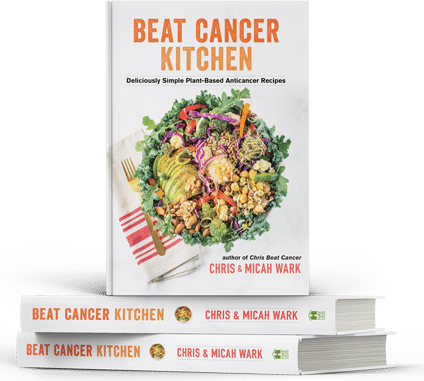
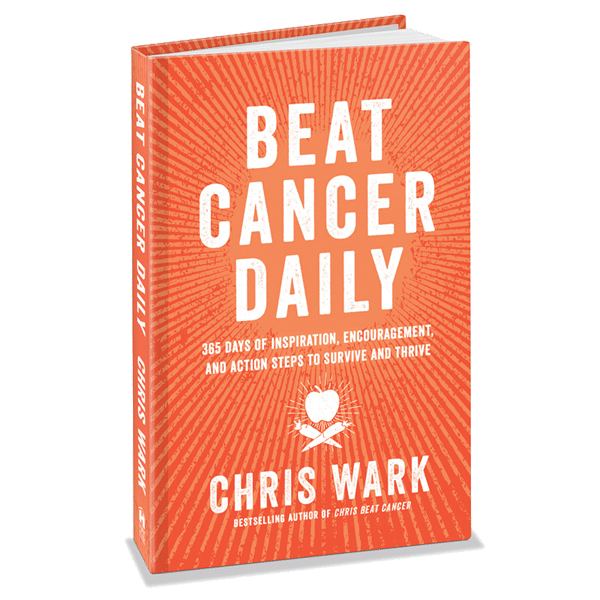
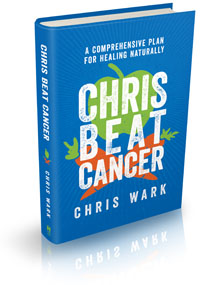 Chris Beat Cancer: A Comprehensive Plan for Healing Naturally, published by Hay House, is a National Bestseller as ranked by USA Today, The Wall Street Journal, and Publishers Weekly! Get it on Amazon here, or anywhere books are sold.
Chris Beat Cancer: A Comprehensive Plan for Healing Naturally, published by Hay House, is a National Bestseller as ranked by USA Today, The Wall Street Journal, and Publishers Weekly! Get it on Amazon here, or anywhere books are sold. I've interviewed over 60 people who've healed all types and stages of cancer. Check them out here. Or use the search bar to find survivors of specific cancer types.
I also created a coaching program for cancer patients, caregivers and anyone who is serious about prevention called SQUARE ONE. It contains the step-by-step strategies used by myself and everyone I know who has healed cancer with nutrition and natural, non-toxic therapies.
Watch SQUARE ONE Module 1 for free here
(((c)))
Chris Beat Cancer is reader-supported. If you purchase a product through a link on this site I may receive compensation from the affiliate partner (like Amazon). Your support helps fund this blog and my mission so my team and I can continue to do the work that we do. Thank you!

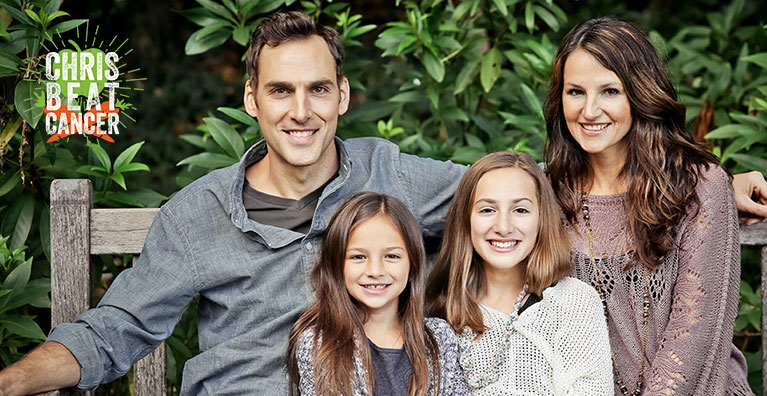
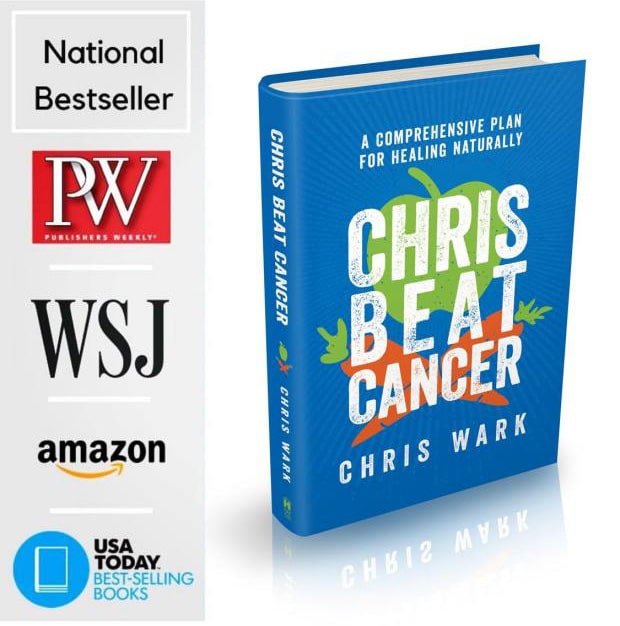
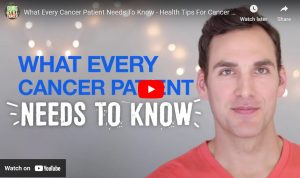

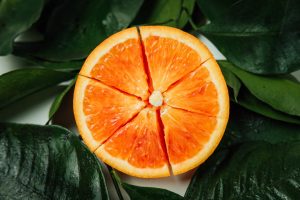

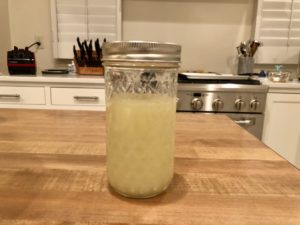

This Post Has 30 Comments
One more item to consider for sunscreen for Reese, you and Nick..
Dana
I switched to “Burn out” a couple years back. But I would use the Badger if that weren’t available. The vitamin D is something to think about. I use the sunscreen mostly on my face, but am home mostly so probably don’t get enough vit D.
Another great article. Thanks Chris. I have been trying to get 10 to 15 min of sun for vitamin D a day. I do not think we are meant to get “no Sun”. Even my dog will lie in the sun for a short time. My dermatologist does not agree with this at all. It has increased some sun spots on my skin, but I went years avoiding the sun and develop a vitamin D deficiency. I agree the chemicals in most commercial sunscreens getting into your skin could not be good for you. Susan
Susan, witch hazel is awesome to use for sun spots. Used daily it as helped mine fade in just 4-6 weeks. I even use it on my arms.
Very interesting, will look into this, thanks Kristin!
I’m a consultant for Ava Anderson Non Toxic and they make a sunscreen that uses non nano particles of zinc oxide, which doesn’t cross into organs. All of our products score a 0-1 on the EWG. Email me and I can send you a free bottle to sample if you’re interested.
Hi Elizabeth Klebart, can I have your email, I am interested in the sample :)
Elizabeth, I would be interested in trying a sample as well. May I have your email and product name?
Elizabeth,
Can you send me a bottle. My email address is sandboxsurfer@hotmail.com
Ken
Is it possible to get a sample? I am looking for a natural non whitening sunscreen that is easy to spread.
Hi Elizabeth. I’m a rather pasty white Brit who’s just moved to sunny California so am am quite keen to find a fully functioning sun screen and would happily test run your product. My email is patmacman@me.com
Many thanks
Patrick
I use organic extra virgin coconut oil every day after I take a shower. It naturally protects me from the sun and I live in Florida! Have not used sunscreen in 9 years and I never get burned. I also try to add coconut oil to smoothies and other foods so I get the benefits inside and out. My skin looks and feels amazing.
I am one that had stage 1 Melanoma. I took a prophylactic approach and had the surrounding area also removed. Studies show that when you do that you have a 98% chance of it never returning. I also had the sentinel node removed and it was unaffected.
Chri,s you talked about fair skinned people but I believe too that eye and hair color has a lot to do with it playing into what heritage has to do with it as well. I have dark brown hair, green eyes and not exactly fair. I was told I could most definitely get in the sun but to adamantly avoid burns. I do prefer to cover up as opposed to slathering on chemicals. It’s not always easy especially when you’re in the water and the rash guards are a great way to do that – not exactly cool on a hot sweltering day but it’s a great alternative.
I disagree a bit on one thing you said. Melanoma actually DOES appear on skin that IS exposed to the sun the most. Ladies legs, arms and neck. Men’s arms, legs, backs, stomachs/chest and neck. BUT on the other hand it would not account for the Melanoma’s that appear in your mouth and scalp (with hair) where sun rarely shines. If truly Melanoma can begin internal and then come out in the form of a mole/lesion, how do you account for that? I don’t really have the answer to that one. I AM vitamin D deficient and take 50,000 IU once a week. I am more apt to get small quantities of sun because frankly it lifts my mood and makes me feel ‘sunny’ (sorry) and I feel a little bit of color looks healthy….a LITTLE bit of color mind you.
Thanks for your info – I love reading and considering it all. I appreciate you doing all the hard work. Thanks for letting me rant.
Hi Jeanne, thanks for your comment. I realized my statement above was unclear. I’m not saying melanoma doesn’t appear on parts of the body that get the most sun like head neck and arms, but it is more common on parts that don’t. For men it is most common on the upper back for women it is the lower legs.
http://www.clevelandclinicmeded.com/medicalpubs/diseasemanagement/dermatology/cutaneous-malignant-melanoma/
Thanks for the information Chris!
Hi Chris,
My dad has a rare form of squamous cell carcinoma. It’s located INSIDE of his mouth – on his gums and upper palate of his mouth. Obviously sun isn’t the cause for this. However I do believe that our environment plays a big role in this. He was a smoker / drinker for many years, and I believe that any environmental irritant passing over those skin cells can cause problems. God designed us to be hunter/gatherers, requiring many hours out in the sun. The difference now days is that we have damaged our ozone with pollution, and these harmful rays are starting to find holes to reach us with little filtration. So why do some people get squamous cell carcinoma from the sun, and others don’t? Possibly location? I’d be curious to find out if there is any correlation between skin cancer among people spending time outdoors near larger cities or heavily polluted areas, and the levels of those out in the country in more remote areas. I’ve been thinking a lot about this lately…
Take care,
~Erik
THANK YOU for posting this. My mother passed away last year from melanoma of the COLON. It STARTED in her colon and was never on the outside of her body. It went from her colon to her lymph system and she passed away (after the doctors sped up her death with their ‘treatments’). She did a lot of things in her life. She harbored negative feelings, kept a box of candy bars by her bed, stressed herself out over every little thing but she certainly NEVER sun tanned her colon.
what about octocrylene, isn’t that harmful, too? and what’s with nano particles? I hear those are supposed to be really vicious.
so, if I understand correctly, retinyl palmitate is a problem combined with sun exposure? I think my moisturizer (the one I use daily, without sun protection) contains this ingredient. does that mean I shouldn’t use it during the day in summer?
Hey Chris!
Great article with lots of good info!
Incase anyone’s interested, I recently wrote about how to read labels, along with a more extensive list of totally clean, truly natural + organic sunscreens!
http://www.glamorganicgoddess.com/safe-sunscreen-guide-best-natural-organic-sun-protection/
xo
Danielle :)
Good information but where is the reference to the studies of rats and vitamin E for sun damage prevention? I read something a while back (I wish I could remember the source) about rats that were given vitamin E had almost no cancer from UV exposure as opposed to the ones on the ‘typical’ rat diet. It seems to me that this is another case of the ‘mileu’ having a great impact on a condition. I always take vitamin E when I’m going to be out in the sun for an extended period of time and I don’t remember the last time I got burned.
I think this angle goes along with our belief that the condition of our bodies has more to do with our health than outside sources.
I haven’t seen that one Kathy. Please share if you find it. Thanks!
Chris,
I am rather confused as I was led to believe by Mercola and the Vitamin D council that the low pressure tanning beds (used for like 5 minutes) were helpful preventing so many types of cancer? I even signed up to use one because of Mercola promotion.
Pat
My mom was just diagnosed with melanoma. Do you recommend specific supplements or diet for this particular type of cancer?
Melanoma has a very high survival rate I think it’s like 80% live at least 5 years…
Anyhow send her to my site, what I did is a universal healing diet.
Chris, I have found similar research as you re the sun. I was wondering what you thought of Carribean Solutions sunscreen.
Thanks for the great post. I am a 52 year old man and fortunately did not spend my youth tanning- I didn’t hide from the sun- I like hiking and all- but I didn’t bake. And now I look 10 years younger than my contemporaries. I am a pale guy with Scottish genes- I don’t burn easily but I don’t tan either. But I do want to encourage any of you young ones to not bake. You will be happy you didn’t.
I had a bit of cancer on my ear last year that involved surgery and reconstruction- expensive and a great reminder to be careful out there.
I have read that different skin types absorb Vit D at different rates. Fair skin absorbs faster (with the rational that our forbears were from places with less sun and needed to absorb it faster) and darker skin types absorbed Vit D slower- as they had more sun in their life. So, if that is true, it seems wise to pursue one’s dose of Vit D accordingly.
I read that wearing sunglasses tricks our body into believing we are in the dark, while we have natural defenses in our melatonin to prevent sunburn in bright light. It’s an interesting idea. Here’s the link to one woman’s explanation of the theory. Don’t know if or where the research is, but I’d be interested in finding it. What do you think?
Here is the link–
Absolutely Melanie! I have researched this as well and will eventually post about it. :)
What is cancer? What causes cancer? Cancer is a disease of the cells, which are the body’s basic building blocks. Most cancers do not have known causes from a chemical, environmental, genetic, immunologic, or viral origin. Cancer cells arise when irreparable damage occurs to DNA? According to Cancer Research UK, there is no single cause for any one type of cancer. Medical News Today is a leading resource for the latest news on cancer. Ferromagnetic Cancer Theory (Theory from The OLD TESTAMENT; Iron Conception): any cancer is initiated by accumulation of superparamagnetic, ferrimagnetic and ferromagnetic nanoparticles within pre-tumor cells. Magnetism (a force that attracts or repels intracellular nanoobjects) causes cancer. Intracellular molecules FeO;Fe2O3;Fe3O4 are the main creators of these nanoparticles (any cancer is a subtle iron disease). These nanoparticles chaotically distort DNA and shift chromosomes by local magnetic fields. Thus, DNA and chromosomes get defects and disruptions. Any cancer is intracellular superpara-ferri-ferromagnetic infection. Accurate anti-iron methods of The Old Testament can successfully beat any cancer. Anti-iron intratumoral injections [sulfur (2%) + olive oil (98%); 36.6C – 39.0C] (by ceramic needles) can suppress any tumors and large metastases; can give harmless infiltrations (harmless necroses; deposits of cells that die; benign capsules). Anti-iron slow blood loss (even 75%) [hemoglobin control], anti-iron goat milk diet and anti-iron drinking water containing hydrogen sulfide can neutralize any micrometastases.
Comments are closed.